Benjamin Negrevergne
LAMSADE
Lattice Climber Attack: Adversarial attacks for randomized mixtures of classifiers
Jun 12, 2025
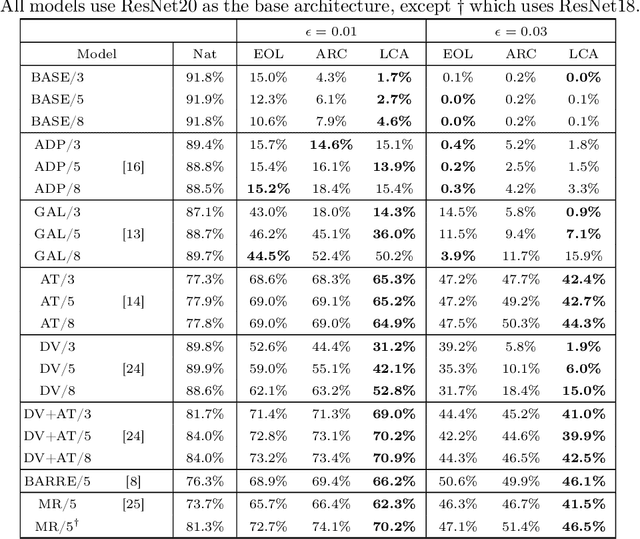
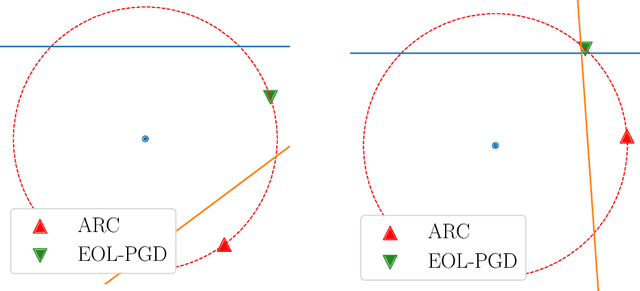
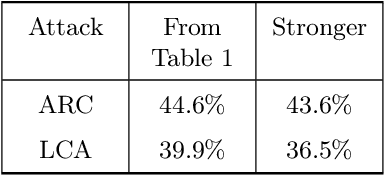
Abstract:Finite mixtures of classifiers (a.k.a. randomized ensembles) have been proposed as a way to improve robustness against adversarial attacks. However, existing attacks have been shown to not suit this kind of classifier. In this paper, we discuss the problem of attacking a mixture in a principled way and introduce two desirable properties of attacks based on a geometrical analysis of the problem (effectiveness and maximality). We then show that existing attacks do not meet both of these properties. Finally, we introduce a new attack called {\em lattice climber attack} with theoretical guarantees in the binary linear setting, and demonstrate its performance by conducting experiments on synthetic and real datasets.
Monte Carlo Graph Coloring
Apr 04, 2025Abstract:Graph Coloring is probably one of the most studied and famous problem in graph algorithms. Exact methods fail to solve instances with more than few hundred vertices, therefore, a large number of heuristics have been proposed. Nested Monte Carlo Search (NMCS) and Nested Rollout Policy Adaptation (NRPA) are Monte Carlo search algorithms for single player games. Surprisingly, few work has been dedicated to evaluating Monte Carlo search algorithms to combinatorial graph problems. In this paper we expose how to efficiently apply Monte Carlo search to Graph Coloring and compare this approach to existing ones.
Improving Discriminator Guidance in Diffusion Models
Mar 20, 2025Abstract:Discriminator Guidance has become a popular method for efficiently refining pre-trained Score-Matching Diffusion models. However, in this paper, we demonstrate that the standard implementation of this technique does not necessarily lead to a distribution closer to the real data distribution. Specifically, we show that training the discriminator using Cross-Entropy loss, as commonly done, can in fact increase the Kullback-Leibler divergence between the model and target distributions, particularly when the discriminator overfits. To address this, we propose a theoretically sound training objective for discriminator guidance that properly minimizes the KL divergence. We analyze its properties and demonstrate empirically across multiple datasets that our proposed method consistently improves over the conventional method by producing samples of higher quality.
Unveiling the Role of Randomization in Multiclass Adversarial Classification: Insights from Graph Theory
Mar 18, 2025Abstract:Randomization as a mean to improve the adversarial robustness of machine learning models has recently attracted significant attention. Unfortunately, much of the theoretical analysis so far has focused on binary classification, providing only limited insights into the more complex multiclass setting. In this paper, we take a step toward closing this gap by drawing inspiration from the field of graph theory. Our analysis focuses on discrete data distributions, allowing us to cast the adversarial risk minimization problems within the well-established framework of set packing problems. By doing so, we are able to identify three structural conditions on the support of the data distribution that are necessary for randomization to improve robustness. Furthermore, we are able to construct several data distributions where (contrarily to binary classification) switching from a deterministic to a randomized solution significantly reduces the optimal adversarial risk. These findings highlight the crucial role randomization can play in enhancing robustness to adversarial attacks in multiclass classification.
What Makes Large Language Models Reason in (Multi-Turn) Code Generation?
Oct 10, 2024



Abstract:Prompting techniques such as chain-of-thought have established themselves as a popular vehicle for improving the outputs of large language models (LLMs). For code generation, however, their exact mechanics and efficacy are under-explored. We thus investigate the effects of a wide range of prompting strategies with a focus on automatic re-prompting over multiple turns and computational requirements. After systematically decomposing reasoning, instruction, and execution feedback prompts, we conduct an extensive grid search on the competitive programming benchmarks CodeContests and TACO for multiple LLM families and sizes (Llama 3.0 and 3.1, 8B, 70B, 405B, and GPT-4o). Our study reveals strategies that consistently improve performance across all models with small and large sampling budgets. We then show how finetuning with such an optimal configuration allows models to internalize the induced reasoning process and obtain improvements in performance and scalability for multi-turn code generation.
Exploring Precision and Recall to assess the quality and diversity of LLMs
Feb 28, 2024



Abstract:This paper introduces a novel evaluation framework for Large Language Models (LLMs) such as Llama-2 and Mistral, focusing on the adaptation of Precision and Recall metrics from image generation to text generation. This approach allows for a nuanced assessment of the quality and diversity of generated text without the need for aligned corpora. By conducting a comprehensive evaluation of state-of-the-art language models, the study reveals significant insights into their performance on open-ended generation tasks, which are not adequately captured by traditional benchmarks. The findings highlight a trade-off between the quality and diversity of generated samples, particularly when models are fine-tuned with human feedback. This work extends the toolkit for distribution-based NLP evaluation, offering insights into the practical capabilities and challenges faced by current LLMs in generating diverse and high-quality text.
Optimal Budgeted Rejection Sampling for Generative Models
Nov 01, 2023



Abstract:Rejection sampling methods have recently been proposed to improve the performance of discriminator-based generative models. However, these methods are only optimal under an unlimited sampling budget, and are usually applied to a generator trained independently of the rejection procedure. We first propose an Optimal Budgeted Rejection Sampling (OBRS) scheme that is provably optimal with respect to \textit{any} $f$-divergence between the true distribution and the post-rejection distribution, for a given sampling budget. Second, we propose an end-to-end method that incorporates the sampling scheme into the training procedure to further enhance the model's overall performance. Through experiments and supporting theory, we show that the proposed methods are effective in significantly improving the quality and diversity of the samples.
Adversarial attacks for mixtures of classifiers
Jul 20, 2023



Abstract:Mixtures of classifiers (a.k.a. randomized ensembles) have been proposed as a way to improve robustness against adversarial attacks. However, it has been shown that existing attacks are not well suited for this kind of classifiers. In this paper, we discuss the problem of attacking a mixture in a principled way and introduce two desirable properties of attacks based on a geometrical analysis of the problem (effectiveness and maximality). We then show that existing attacks do not meet both of these properties. Finally, we introduce a new attack called lattice climber attack with theoretical guarantees on the binary linear setting, and we demonstrate its performance by conducting experiments on synthetic and real datasets.
Precision-Recall Divergence Optimization for Generative Modeling with GANs and Normalizing Flows
May 30, 2023



Abstract:Achieving a balance between image quality (precision) and diversity (recall) is a significant challenge in the domain of generative models. Current state-of-the-art models primarily rely on optimizing heuristics, such as the Fr\'echet Inception Distance. While recent developments have introduced principled methods for evaluating precision and recall, they have yet to be successfully integrated into the training of generative models. Our main contribution is a novel training method for generative models, such as Generative Adversarial Networks and Normalizing Flows, which explicitly optimizes a user-defined trade-off between precision and recall. More precisely, we show that achieving a specified precision-recall trade-off corresponds to minimizing a unique $f$-divergence from a family we call the \mbox{\em PR-divergences}. Conversely, any $f$-divergence can be written as a linear combination of PR-divergences and corresponds to a weighted precision-recall trade-off. Through comprehensive evaluations, we show that our approach improves the performance of existing state-of-the-art models like BigGAN in terms of either precision or recall when tested on datasets such as ImageNet.
Randomization for adversarial robustness: the Good, the Bad and the Ugly
Feb 14, 2023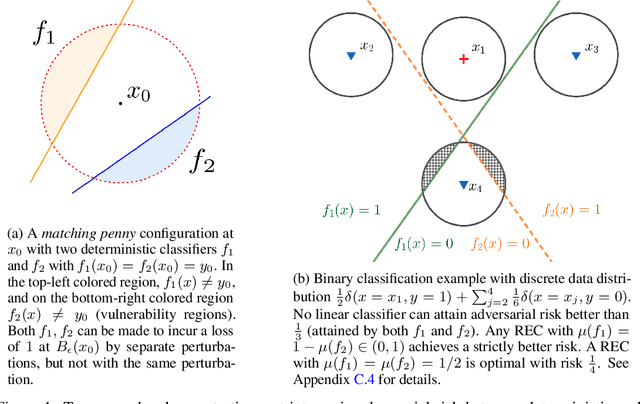
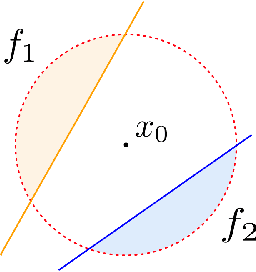
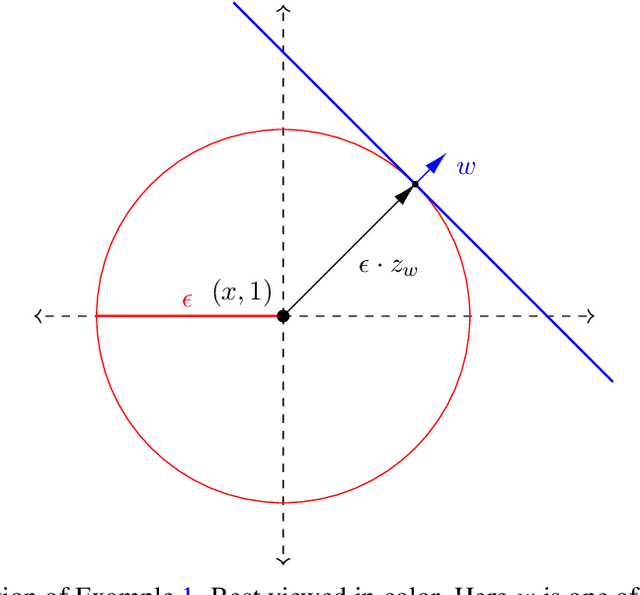
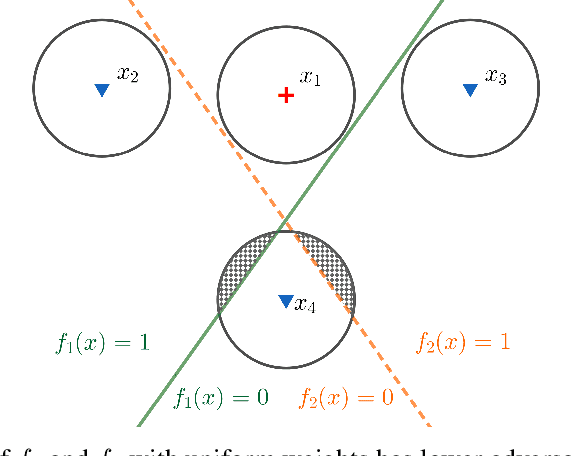
Abstract:Deep neural networks are known to be vulnerable to adversarial attacks: A small perturbation that is imperceptible to a human can easily make a well-trained deep neural network misclassify. To defend against adversarial attacks, randomized classifiers have been proposed as a robust alternative to deterministic ones. In this work we show that in the binary classification setting, for any randomized classifier, there is always a deterministic classifier with better adversarial risk. In other words, randomization is not necessary for robustness. In many common randomization schemes, the deterministic classifiers with better risk are explicitly described: For example, we show that ensembles of classifiers are more robust than mixtures of classifiers, and randomized smoothing is more robust than input noise injection. Finally, experiments confirm our theoretical results with the two families of randomized classifiers we analyze.
 Add to Chrome
Add to Chrome Add to Firefox
Add to Firefox Add to Edge
Add to Edge